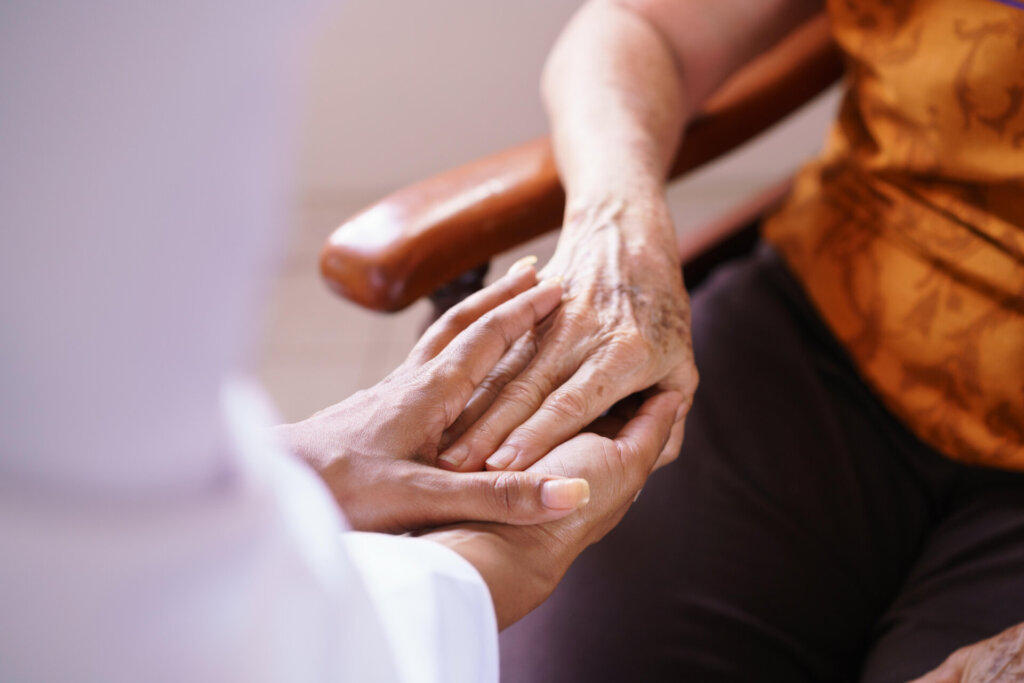Child poverty rates reach the highest point in the North East
Written by Sophie Middleton on 6th December 2022
Listen to the full article here
The cost-of-living crisis is a large struggle for everyone and is currently causing child poverty rates to skyrocket in local areas.
Child poverty has been an ever-growing problem in the North East, and England in general, for many years. The cost-of-living crisis is worsening child poverty rates around the North East, at the minute, the North East has the highest child poverty rates in England.
Love, Amelia, a baby bank based in Hendon, has faced struggles due to the increase in child poverty around the North East. Steph Capewell, manager at Love, Amelia, stated “the North East has overtaken London in the highest level of deprecation in the UK for Children” and described it as a “crisis that’s getting worse.”

Love, Amelia – a baby bank based in Hendon, Sunderland.
Hendon is an area in which child poverty is getting worse. Steph stated, “around 45% of children in Hendon are living in poverty.” Although there are areas, such as Roker, which are more affluent, child poverty is a big issue in Sunderland and the North East in general, with Steph adding that “child poverty is higher than the national average level in Sunderland.”
In terms of demand, Love, Amelia is facing higher levels of demand. In July, they faced around 150 referrals a month, and now they are dealing with over double that amount and are currently set for what Steph says is their “busiest Christmas.” The increase in demand reflects the overall increase in child poverty within the area, more people are needing help.
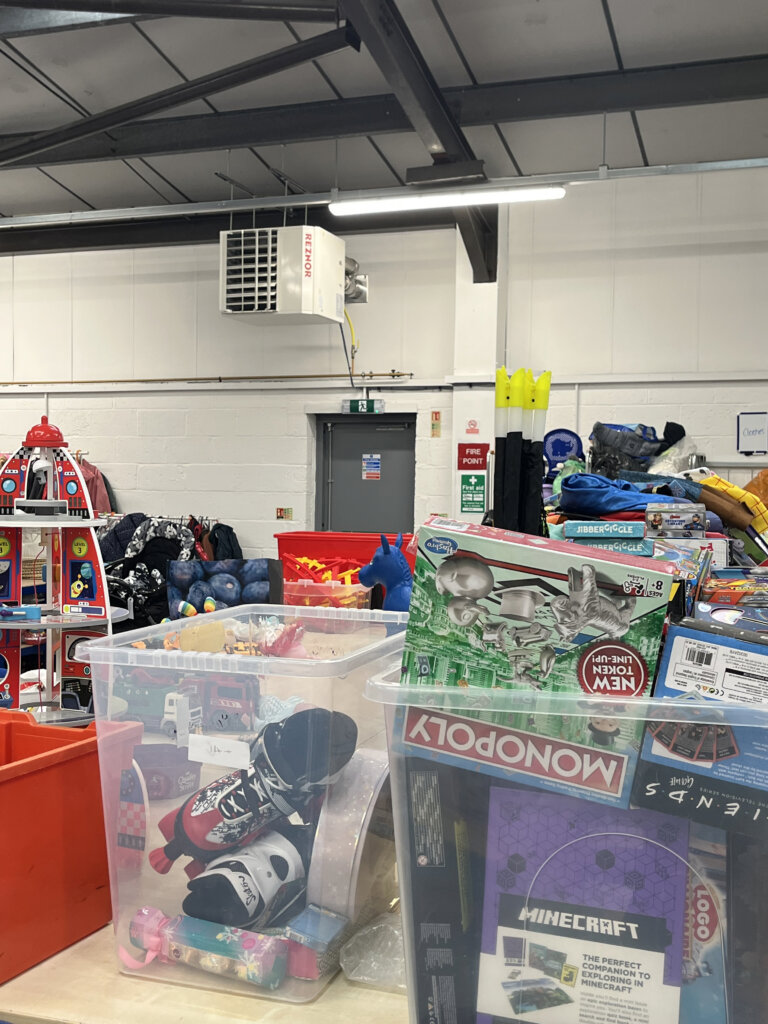
This winter is set to be the “busiest Christmas” at Love, Amelia
Supply is also dropping for charities such as Love, Amelia, as people are finding it more difficult to donate items. Steph said people are extremely kind, but they are noticing fewer items being donated, people are often selling items to provide for themselves, rather than donating. This is the vicious cycle the cost-of-living crisis has induced, people who were once financially stable and were able to donate are now no longer able to do so, they are needing help themselves.
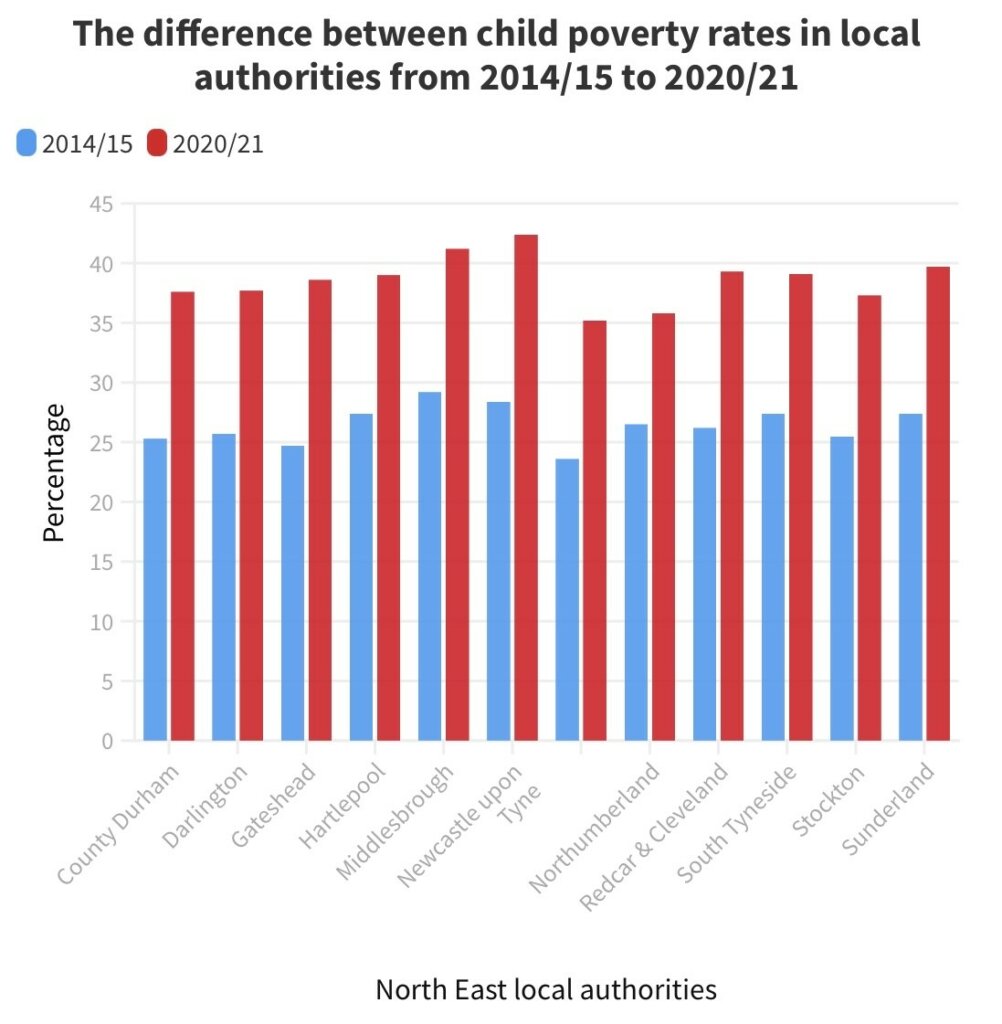
Statistics from End Child Poverty show that in comparison to 2014/2015, all local authority areas within the North East faced an increase in child poverty rates in 2020/21. During this time, Newcastle upon Tyne had the biggest change, going from 28.4% in 2014/15 to 42.4% in 2020/21. Whilst these statistics do not represent the current year, with the cost of living crisis, it’s expected that these statistics will have risen further.
Amanda Bailey, director of North East Child Poverty Commission, expressed: “The North East has seen the steepest increases from 2014 onwards, steeper and quicker than anywhere else.” Moreover, Amanda also stated that “levels of hardship and economic distress are rising” whilst also adding that she believes levels of hardship will continue to rise. The increase in child poverty rates, and poverty in general, have led to increased demand for food banks, baby banks, and clothing banks. “The main challenge is that people’s incomes are getting measured, but the incomes aren’t changing, the outgoings are increasing and changing” Amanda stated.
In addition, Amanda explained that “food banks are becoming normalised, which wasn’t the case a decade ago” and said that food banks are a part of the “fabric of society” now. Amanda also told us “There has been a fall in donations. People no longer have the capacity to donate, and there’s a rising demand, which is extremely unsustainable.” These organisations are often small and will face the pressure of the rise in demand, the supply will lessen, whilst the demand will rise, causing struggles to help those in need.
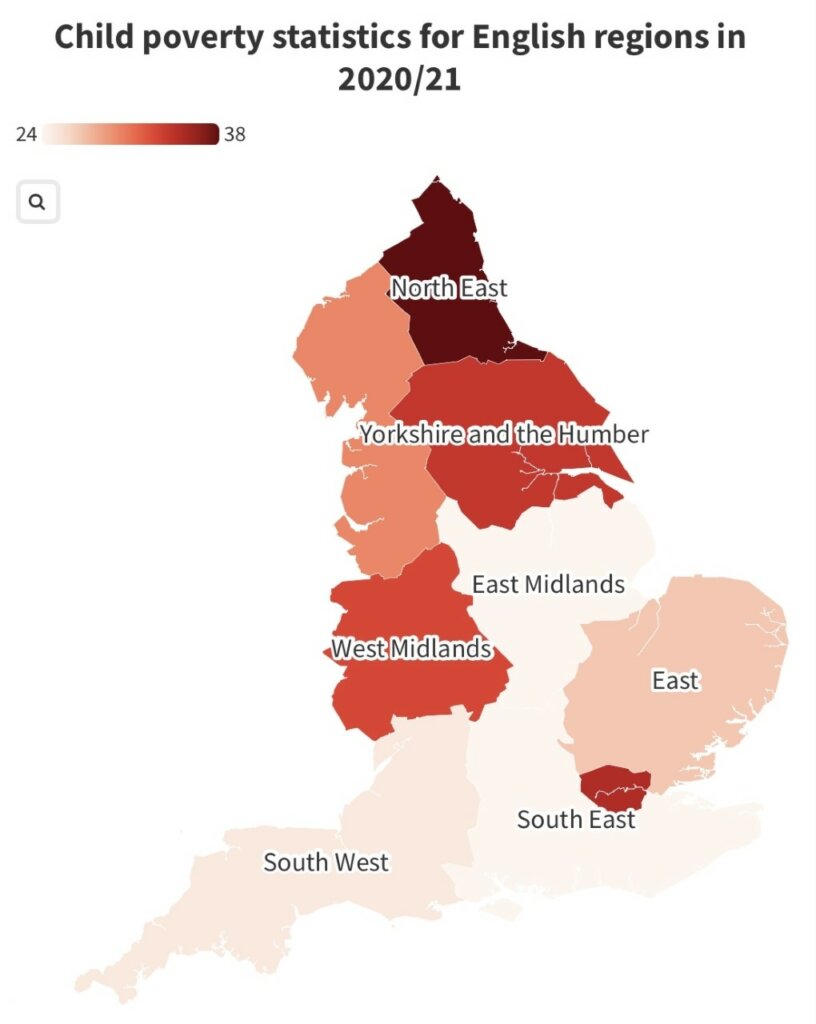
The statistics, from End Child Poverty, shown in the map above, reflect how severe the rates of child poverty in the North East are. There was a 12% rise from 2014/15, when the percentage was 26%, increasing to 38% by 2020/21, meaning the North East now has the highest child poverty rate in England.
Joe Scrase, trustee, and information development lead of The Bay Foodbank in North Shields, said: “This winter will be our toughest yet.” Times are getting harder for people due to the cost-of-living crisis, causing an obvious increase in people referring to these types of services. Joe stated their ‘no cook’ parcels, designed for people without access to cooking or refrigeration facilities, faced the largest area of demand. He said that The Bay has faced a “200% growth in requests for these parcels this year.”
Joe continued: “Child poverty continues to grow at a frightening rate. We now support several breakfast clubs that we provide food.” The Bay has 45 volunteers, seven paid staff, six trustees, and hundreds of supporters, meaning the demand is a problem they can manage at the minute. However, Joe told us; “Whilst we were able to grow our stock reserves during the first lockdowns that back stuff has now gone. We’re having to spend thousands on stock every month to maintain service level.” The Bay also supports other organisations that are struggling during this time.
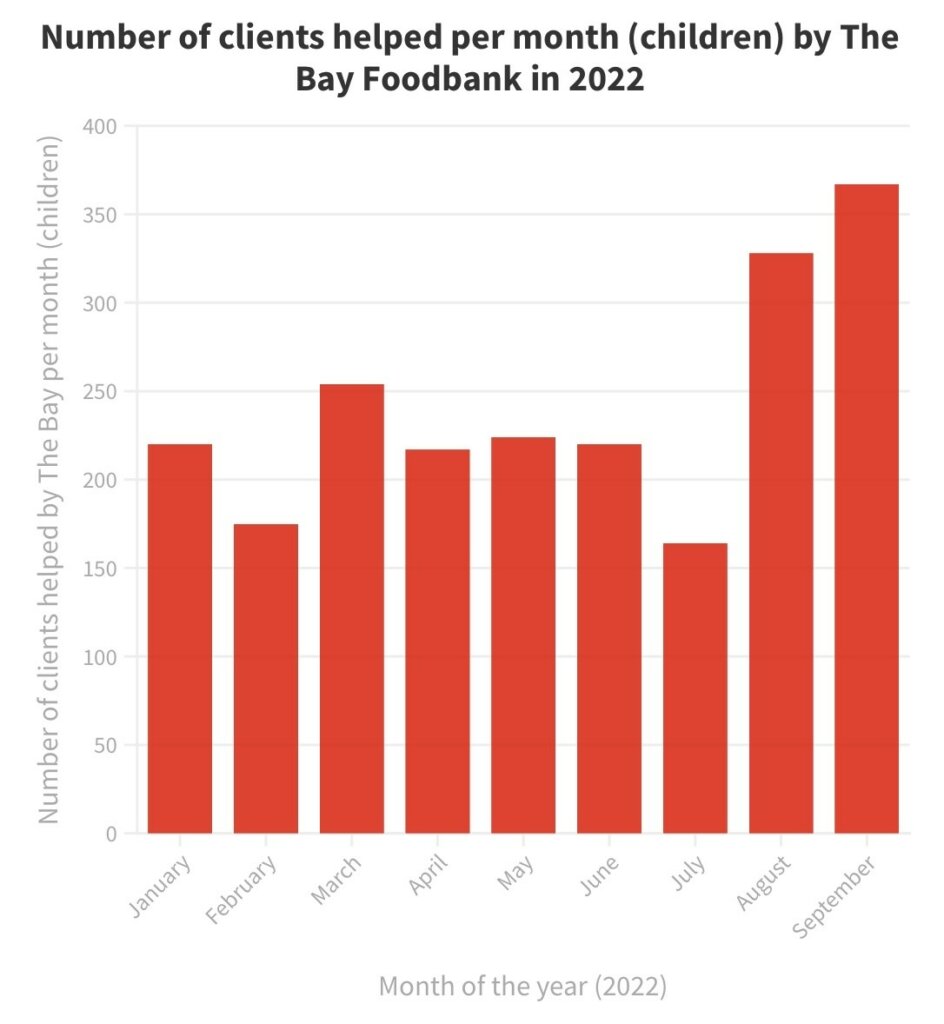
The statistics above, provided by The Bay Foodbank, show that from January to July, the number of children The Bay Foodbank helped each month stayed relatively around the same mark. However, August and September showed a large increase, going from 164 in July, to double this in August, at 328. September also saw an increase from August, as The Bay helped 367 children during this month, 39 more than August.
Unfortunately, the cost of living crisis is pushing more and more people to poverty. Joe said: “We’ve seen an increase in the number of people that would have once supported us receive a food parcel from us. The middle class can no longer afford to donate one or two items in a weekly shop.” The Bay supports around 180 babies a year, and Joe described the levels of child poverty The Bay deals with as “Dickensian.”
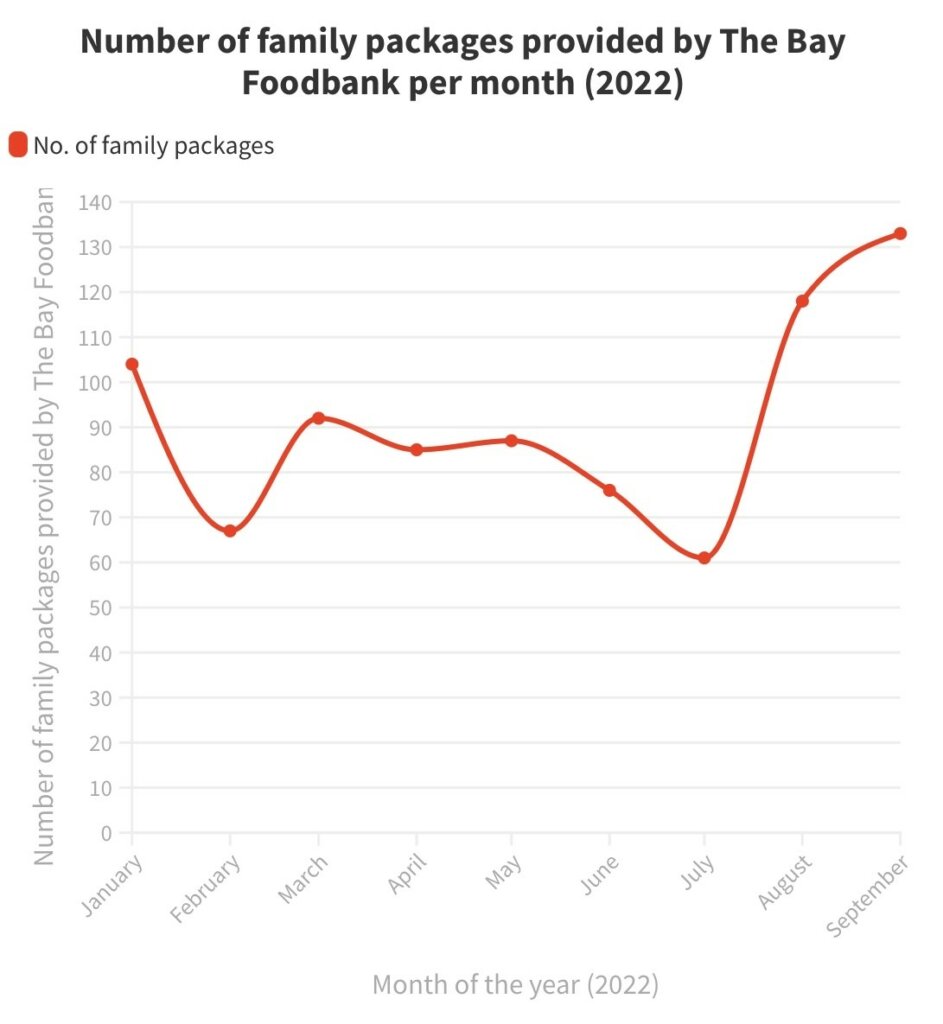
In addition, The Bay Foodbank, as shown in the line graph above, has seen an increase in demand for family parcels in recent months compared to the earlier months of this year. August and September, according to statistics from The Bay, are when the height of demand began to kick in. These statistics are particularly worrying, as with the cost-of-living situation consistently causing more and more problems, the demand is likely to continue rising.
Local food banks around the North East – Google My Maps
Whilst times are getting harder and harder for all of us, services are continuing to provide their support to anyone they can, from food banks to baby banks, to warm banks and clothing banks. There are a large number of local organisations doing their best to help those who need it, shown on the maps in the links above.


